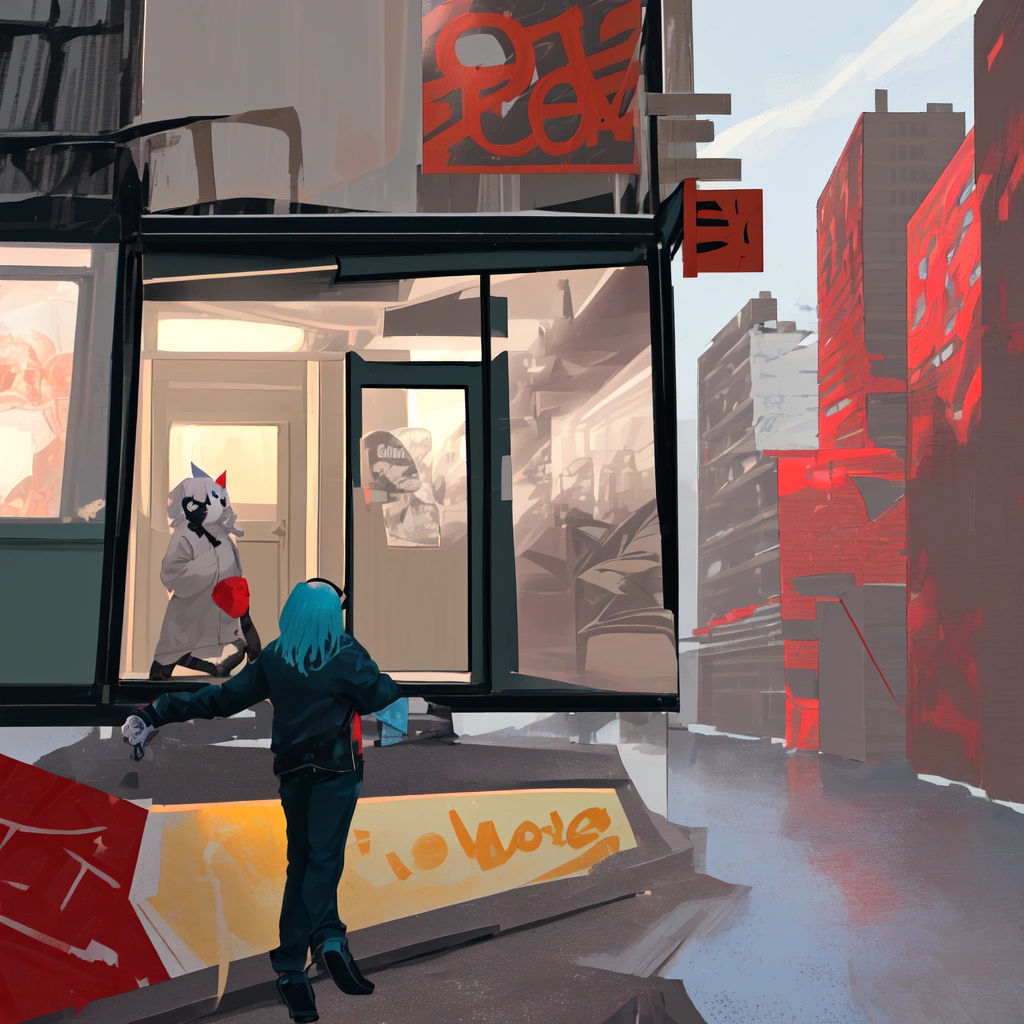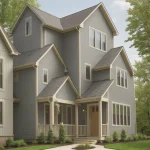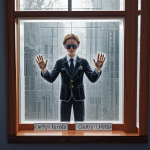Choosing the Right Siding for Your New York City Home: A 2024 Guide to Vinyl and Fiber Cement
Siding Showdown: Vinyl vs. Fiber Cement in the Concrete Jungle
New York City, a metropolis teeming with architectural diversity and subject to relentless weather patterns, presents unique challenges for homeowners selecting appropriate exterior cladding. From meticulously preserved historic brownstones in Brooklyn Heights to sleek, modern high-rises dominating the Manhattan skyline, the choice of siding is paramount, influencing both a building’s aesthetic appeal and its capacity to withstand the elements. In 2024, vinyl siding and fiber cement siding continue to be the leading contenders for NYC siding projects, each offering a distinct set of advantages and disadvantages.
This comprehensive guide provides a detailed exploration of these two popular options, specifically tailored to the demands of New York City home improvement and renovation, navigating the complexities of urban siding selection. Understanding the nuances of each material is crucial for making an informed decision that balances cost, durability, and aesthetic preferences. The selection of siding in New York City extends beyond mere aesthetics; it’s a critical decision impacting a building’s longevity and resilience against the city’s harsh climate.
The region experiences significant temperature fluctuations, ranging from sweltering summers with high humidity to frigid winters characterized by freeze-thaw cycles. These conditions can wreak havoc on siding materials, leading to cracking, warping, and moisture infiltration if the wrong choice is made. Furthermore, the dense urban environment exposes siding to pollutants, salt spray (in coastal areas), and the potential for physical damage from construction activities or everyday wear and tear. Therefore, homeowners must carefully consider factors such as water resistance, impact resistance, and UV protection when evaluating vinyl siding and fiber cement siding options.
Navigating the complexities of siding installation in NYC also requires a thorough understanding of local building codes and regulations. The New York City Department of Buildings (DOB) has specific requirements for siding materials, installation methods, and fire safety. These regulations are in place to ensure the safety and well-being of residents and to maintain the structural integrity of buildings. Obtaining the necessary permits for siding installation can be a complex process, often requiring detailed architectural plans and inspections. Engaging experienced contractors familiar with New York City building codes is essential to ensure compliance and avoid costly delays or penalties. Furthermore, factors such as energy efficiency and environmental impact are increasingly important considerations in New York City home renovation projects, influencing the choice between vinyl and fiber cement. Brands like James Hardie siding are often considered due to their reputation for quality and compliance with stringent building standards.
Vinyl Siding: Budget-Friendly Protection with Caveats
Vinyl siding, composed primarily of PVC plastic, has long been a budget-friendly favorite among New York City homeowners seeking an affordable exterior cladding solution. Its popularity stems from its relatively low cost, straightforward installation process, and minimal maintenance requirements, making it an attractive option for those undertaking home renovation projects on a budget. In NYC, vinyl offers inherent resistance to moisture, a crucial advantage given the city’s humid summers, frequent rainfall, and the potential for water damage that can plague brownstones and other older structures.
This moisture resistance helps prevent rot and mold growth, contributing to the longevity of the building’s structure. However, despite these benefits, vinyl siding is not without its drawbacks, particularly in the challenging urban environment of New York City. One significant concern with vinyl siding in NYC is its susceptibility to fading and warping due to prolonged exposure to intense sunlight. The densely populated nature of the city often leads to buildings being situated close together, resulting in reflected and amplified UV rays that can accelerate the degradation of vinyl.
This fading can detract from the aesthetic appeal of a home and potentially lower property values, especially in historic districts where maintaining architectural integrity is paramount. While newer vinyl products incorporate UV inhibitors to mitigate this issue, the long-term performance of these additives in the face of relentless urban sunlight remains a concern. Furthermore, while vinyl siding technology has advanced, it generally doesn’t replicate the authentic look and feel of natural materials like wood or stone, which can be a deciding factor for homeowners in upscale neighborhoods or landmarked areas.
Expert observations and real estate data from the past decade (2014-2023) reveal a discernible trend in the application of vinyl siding across New York City’s diverse boroughs. While vinyl siding remains a popular choice in less affluent areas where cost-effectiveness is a primary driver, its prevalence diminishes significantly in more expensive boroughs like Manhattan and parts of Brooklyn and Queens. In these areas, homeowners often prioritize aesthetic appeal and long-term durability, opting for premium siding materials like fiber cement or natural wood, despite the higher initial investment.
This preference is further reinforced by building codes and regulations in historic districts, which may restrict the use of vinyl siding to preserve the architectural character of the neighborhood. The choice of siding material, therefore, becomes a critical factor influencing both the curb appeal and the overall value of a New York City property. Moreover, the installation of vinyl siding in NYC requires careful consideration of local building codes and best practices for urban siding applications.
Contractors must be adept at navigating tight spaces, adhering to stringent regulations regarding fire safety and wind resistance, and ensuring proper flashing around windows and doors to prevent water infiltration. The expansion and contraction of vinyl siding due to temperature fluctuations must also be accounted for during installation to avoid buckling or cracking. While the installation process is generally less complex than that of fiber cement, it still demands expertise and attention to detail to ensure a long-lasting and weathertight cladding system. Failure to comply with local regulations or to properly address the unique challenges of the NYC environment can result in costly repairs and potential code violations.
Fiber Cement Siding: Durability and Style at a Premium
Fiber cement siding, typically made from a mixture of cement, sand, and cellulose fibers, offers superior durability and aesthetic versatility, making it a compelling choice for discerning New York City homeowners. Brands like James Hardie siding have become industry standards, renowned for their quality and longevity. It’s significantly more resistant to extreme weather conditions, including the freeze-thaw cycles that NYC experiences, where temperature fluctuations can rapidly degrade less robust materials like vinyl siding. Fiber cement is also fire-resistant, a crucial safety feature in a densely populated urban environment where building codes prioritize fire safety.
Its ability to mimic the look of natural wood, brick, or stone allows homeowners to maintain or even enhance their home’s architectural style, a significant consideration in neighborhoods with strict aesthetic guidelines. However, fiber cement comes with a higher initial cost compared to vinyl siding, and requires more skilled siding installation. Improper installation can lead to moisture absorption and damage, negating its benefits and potentially leading to costly repairs. This underscores the importance of hiring experienced contractors familiar with New York City home improvement projects and urban siding challenges.
According to industry experts, the long-term value of fiber cement often outweighs the initial investment, particularly in the demanding climate of the Northeast. Beyond its resilience, fiber cement’s sustainability is increasingly recognized. Unlike some vinyl siding options, fiber cement is considered a more environmentally friendly choice due to its composition and lifespan. Moreover, its fire resistance can translate to lower insurance premiums, offering a financial incentive that complements its durability. For New York City real estate, choosing fiber cement siding can be a strategic investment, enhancing property value and providing peace of mind against the elements. When planning a home renovation, understanding these benefits and factoring in siding costs is crucial for making an informed decision.
Cost Analysis: Initial Investment, Long-Term Value, and ROI
The cost analysis is a critical factor for NYC homeowners navigating the complexities of siding choices. Vinyl siding typically presents a lower initial investment, generally ranging from $3 to $7 per square foot installed, making it an attractive option for budget-conscious homeowners. Fiber cement siding, recognized for its durability and aesthetic flexibility, commands a higher upfront cost, typically falling between $8 and $15 per square foot installed. These figures, however, represent just the tip of the iceberg.
New York City home improvement projects are rarely straightforward, and unforeseen complications, such as the need for scaffolding in densely packed areas or the discovery of underlying structural issues, can significantly impact the final project cost. It’s crucial to obtain detailed, itemized quotes from multiple NYC siding contractors to accurately assess the initial financial outlay. Beyond the initial price tag, long-term maintenance costs and potential return on investment (ROI) are paramount considerations. While vinyl siding boasts low maintenance, it may necessitate more frequent repairs or even replacement due to susceptibility to damage from extreme weather or fading from prolonged sun exposure – factors particularly relevant in NYC’s variable climate.
Fiber cement siding, particularly brands like James Hardie siding, offers exceptional longevity, potentially lasting for decades with minimal upkeep when properly installed according to best practices and NYC building codes. This durability translates to reduced long-term expenses and enhanced property value, especially in historic districts or upscale neighborhoods where curb appeal is a significant driver of real estate prices. Investing in fiber cement siding can be a strategic home renovation that significantly enhances a property’s market value.
Furthermore, energy efficiency plays an increasingly important role in the decision-making process. While both vinyl siding and fiber cement siding can be insulated to improve thermal performance, fiber cement generally exhibits superior inherent thermal properties. This can translate to lower energy bills over time, providing ongoing savings for homeowners. Given New York City’s commitment to sustainability, homeowners should also investigate potential energy efficiency rebates offered by the city or state for siding upgrades that meet specific energy performance standards. Understanding these incentives can further offset the initial cost of more energy-efficient siding options. Finally, the complexities of siding installation in an urban environment like NYC necessitate engaging contractors experienced with navigating tight spaces, adhering to stringent building codes, and securing the required permits, all of which contribute to the overall project cost.
NYC Installation: Permits, Contractors, and Best Practices
Siding installation in NYC presents a unique gauntlet of challenges, demanding expertise that extends beyond general construction. The city’s dense urban environment, intricate building codes, and rigorous permitting processes necessitate contractors intimately familiar with local regulations and the nuances of New York City home improvement. Securing the necessary permits can be a labyrinthine undertaking, often requiring meticulously detailed architectural plans, structural engineering reports, and multiple inspections from the NYC Department of Buildings. Reputable contractors specializing in NYC siding will proactively manage this process, ensuring compliance and preventing costly delays.
Navigating the specifics of urban siding requires a keen understanding of material performance in the face of unique environmental stressors. Best practices are paramount, beginning with meticulous flashing around windows and doors to create a watertight seal against persistent rain and snow. Adequate ventilation behind the siding is crucial to prevent moisture buildup, which can lead to mold growth and structural damage, especially problematic with vinyl siding. The city’s salty air necessitates the use of corrosion-resistant fasteners, ensuring the longevity of both vinyl siding and fiber cement siding installations.
Consider contractors certified by James Hardie siding, for example, as they demonstrate a commitment to quality installation practices. Beyond technical expertise, successful siding projects in NYC require logistical prowess. Tight spaces often necessitate creative solutions for material delivery and waste removal. Contractors must be adept at coordinating with building management, navigating narrow streets, and minimizing disruption to residents. Furthermore, understanding the aesthetic sensibilities of different neighborhoods is crucial. A fiber cement siding choice that complements the historic charm of a brownstone in Brooklyn might be entirely inappropriate for a modern high-rise in Manhattan. Therefore, when evaluating siding costs, factor in the contractor’s experience with similar projects in your area. Checking online reviews, requesting references from past clients, and verifying licenses and insurance are essential steps in selecting a qualified and reliable contractor for your home renovation project.
Conclusion: Making the Right Choice for Your NYC Home
Ultimately, selecting the right siding for your New York City home is a nuanced decision, deeply intertwined with your individual circumstances. While vinyl siding presents an undeniably attractive entry point due to its lower upfront siding costs, particularly for budget-conscious homeowners undertaking a home renovation, it’s crucial to acknowledge its limitations. Its susceptibility to fading, cracking, and lower impact resistance compared to alternatives can lead to higher long-term maintenance expenses, especially in NYC’s harsh climate.
Conversely, if longevity, aesthetic versatility, and robust protection are paramount, fiber cement siding emerges as the clear frontrunner. Though the initial investment is higher, the long-term value proposition of fiber cement, particularly James Hardie siding, is compelling, offering superior resistance to fire, pests, and the cyclical freeze-thaw patterns that plague New York City. For homeowners in landmarked districts or those seeking to preserve the architectural heritage of their brownstone, fiber cement siding offers unparalleled advantages.
Its ability to convincingly mimic the look of traditional wood clapboard, cedar shingles, or even brick allows for seamless integration with the existing aesthetic fabric of the neighborhood. This is particularly critical in areas where strict building codes govern exterior renovations. Moreover, the enhanced curb appeal and potential increase in property value associated with fiber cement can offset the higher initial siding installation costs, making it a sound investment for discerning New York City real estate owners.
When considering urban siding options, remember that aesthetics play a significant role in property values. Before making a final decision, it’s imperative to consult with a qualified and experienced NYC siding contractor. Navigating the complexities of New York City building codes and permitting processes requires specialized knowledge. A skilled contractor can assess your specific needs, provide accurate siding costs estimates, and ensure proper installation to maximize the lifespan and performance of your chosen siding. They can also advise on crucial aspects such as proper flashing techniques to prevent water damage, a common concern in NYC’s humid environment. Thorough research and expert guidance are invaluable in making an informed decision that protects your investment and enhances the beauty and resilience of your New York City home.


